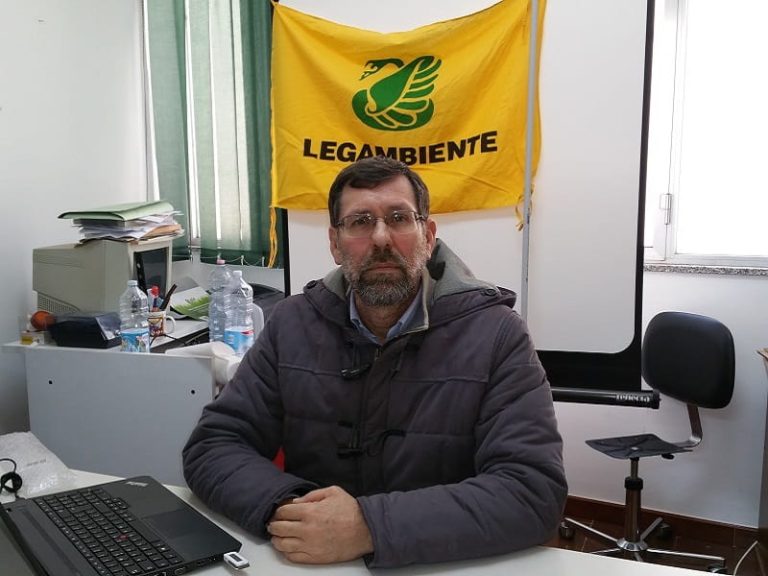
In a long and detailed document from the “Il Carubo” club of Ragusa – Legambiente Ragusa, Claudio Conti, responsible for the circular economy and historical exponent of the environmental association (and also councilor for the environment for a period in the M5 council, Mayor Piccito) , explains why, with increasing figures for individual collection in Ragusa, disposal of waste decreases and incinerators proposed by the regional government as a solution to the problem of waste in Sicily Falls are needed, as they do not are not only useless but even historical adversaries of circular economy as well. Indeed, according to Conti “the incinerators hinder separate collection”. In the Legambiente document sent to the mayor of Ragusa Peppe Caso as the president of the local SRR and to the manager of the same, we read “Based on the data of the Ragusa SRR, the separate collection stood in the province of Ragusa in 2021. At 68, 15 % while the disposal of residual urban waste was reduced to 43,000 tonnes.
In 2018 the RD was just 33.49% and the residual urban waste was equal to 94,500 tonnes. In three years, the RD has more than doubled and the disposed waste has more than halved. Continuing in this way, in 2022, 70% of the wall of the RD will be removed without any problems, placing the province of Ragusa next to the most virtuous Italian provinces”. To continue this virtuous process, Conti continues, “However, there is a need for upward intervention in the treatment of dry residues through increased waste reduction actions, extension of the useful life of assets, and expansion of the collected differentiated fractions.” and their recycling, the application of the most performing collection systems from both a quantitative and qualitative point of view to reduce both residual urban waste and differentiated fractional waste with the selection of residual urban waste for further interception of recyclable materials Bio-stabilization of organic fractions below low respirometric indices is also fundamental, along with interventions on treatment and the alternative use of biostabilized ones. To achieve all this, however, the addition of new plants such as anaerobic digesters for the production of biomethane from organic wastes , it is a necessary condition to increase communication to citizens, which today is severely lacking in all municipalities of the province. Control of the urban sanitation service is intended to overcome the old shortcomings of the municipal police. For the correct distribution of differentiated waste by establishing a database of municipal environmental assessors.
With these conditions, but this is also true in today’s circumstances, the incinerators proposed by the regional government as a solution to the waste problem in Sicily are not only useless, but are historically antithetical to the circular economy. incinerators impede separate collection”. has officially announced a decommissioning plan for 30% of the total. Capacity. , went from 3 to 70% of Slovenia Rd as it opted not to build incinerators in Ljubljana, Catalonia, Scotland and Flanders, which are the new ones. adopting a moratorium on plants, or announcing a phasing out of existing ones. Same direction Emilia Romagna has gone and Tuscany is going. If they had built two incinerators in Treviso, as they would If wanted, it would not have become Italy, the most advanced province in Europe and the world with respect to individual waste collection… Incinerators could probably break down dioxins and furans, heavy metals and nitrogen oxides, but on greenhouse gases they would greatly can reduce”. At this point Claudio Conti enters the merits of the Sicilian situation and explains “It is also wrong to argue because the president of the Musumesi region does so that if they do not have incinerators, they feed the landfill.
In Denmark 100 kg of residue is produced per resident to be sent to landfills. The province of Treviso, which has 1 million inhabitants, produces only 50 kg/resident/residual waste with an RD of 88%. Who is reducing the landfill based on this evidence? To demonstrate the convenience of incinerators compared to landfills, proponents resort to a statistical distortion by not accounting for waste and ash being disposed of in landfills as they are specialized wastes. Whether they are specialized or urban, they are always waste that ends up in landfills. Combustion of waste (as a highly climate-changing gas) as an alternative to landfilling to eliminate the spread of methane that is generated in landfills from organic waste subjected to anaerobic environments has been definitively launched today. The practices seem to have gone away. Bio-fixation and collection of biogas for energy purposes”. And finally the conclusion “It is enough to identify a problem in incinerators and not a solution in waste management, without bothering the most obvious question: when will Sicilian incinerators be operational? ? It took 8 to 10 years to build the Acerra and Parma incinerators, which were among the last to be operational.
But the problem exists in Sicily today. The plants that are needed are others. Ragusa’s SRR proposed a 50,000 ton anaerobic digester for FourSU from PNRR’s funds. Now there is an urgent need of plants where waste is treated separately from collection and where else to bring the dried residue to produce CSS which is no longer recyclable”. (Dice.)